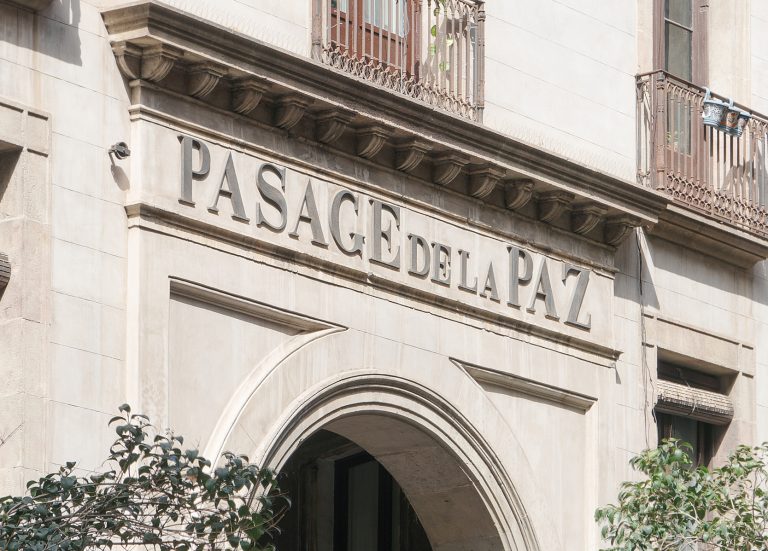Passatge Bacardí, located in the Ciutat Vella district, is a covered walkway, suitable exclusively for pedestrians, which links the Rambla, at number 42, with the Plaça Reial.
This passageway was built in the mid-19th century next to the building constructed at numbers 40-42 of the Rambla for Ramon de Bacardí, making it one of the first covered walkways in the city.
Access to the passageway from the Rambla is through a doorway with a semicircular arch. The doorway is flanked by two low pilasters that rise up to the height of the beginning of the arch. At this height there are two imposts from which the pilasters rise again until they reach the corbels of the balcony located just above the entrance to the passageway. The door can be closed by means of a wrought-iron grille, the arch part of which is fixed and decorated with radial geometric motifs emerging from a central medallion with the letter ‘R’ and, below it, the year ‘1856’. The doorway has two leaves with austere vertical bars. Access from the Plaça Reial is through a similar doorway, although it is somewhat less elaborate. Once inside the passageway, it has two different sections with different roofs. The section closest to the Rambla is covered at the height of the ceiling of the mezzanine by a beam parallel to the street that supports the upper building; on the other hand, the half closest to the Plaça Reial is covered by a glass roof that gives light to the whole space.
The ground floors and windows of the mezzanines located on both sides along the passageway have a uniformity that gives coherence to the whole. All the shop doors and the mezzanine window above them follow a pattern that is repeated throughout the space. Each commercial opening and the mezzanine window are flanked by pilasters with a shaft with a larger volume than the rest of the element, a shaft with a vertically grooved lower section and a plain upper section with a single rectangle in relief, crowned by an Ionic capital. At this height, two sculptures of children support the dust-covering that covers the window. Between the window and the lower door is the space where the name of the shop was originally placed. The window railings are made of wrought iron.
One of the most remarkable elements of this passageway is the gallery that crosses it parallel to the street at mid-height. It is made of an iron structure with elaborate corbels and it is completely glazed.






















